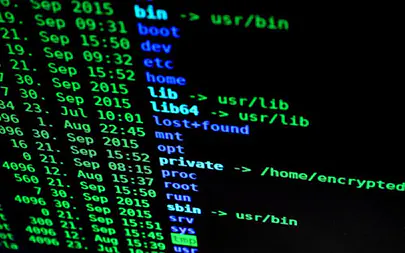Linux Commands: A Prologue to Network Mastery
The Rise of Linux and Its Influence
Firstly, in the ever-evolving landscape of technology, open-source software has distinctly carved a niche for itself. Subsequently, Linux has risen, marking its place as the crowning jewel of this domain. Undoubtedly representing the pinnacle of innovation, adaptability, and robustness, Linux’s influence stretches globally. In fact, it touches every nook and cranny of our digital realm. Moreover, its commands, which can be likened to the very heartbeats of this operating system, play a crucial role. Specifically, they shape the digital experiences that many of us might overlook. For instance, for network administrators, grasping and mastering Linux commands goes beyond being a mere skill. Indeed, it’s a rite of passage.
The Significance of Linux Commands in Network Management
Furthermore, these Linux commands act as the essential tools, facilitating seamless communication, data transfers, and maintaining overall network health. Additionally, they serve as the vital bridge, connecting intricate network architectures to the user-friendly interfaces we cherish. Moving forward, as we delve further into the vast expanse of the Linux universe, we come across the 25 most invaluable Linux commands. Undoubtedly, it’s imperative for every tech professional to be well-acquainted with these tools. In conclusion, these Linux commands stand as the foundational pillars of proficient network management, guaranteeing that networks, regardless of their size, function with unmatched efficiency and dependability.
1. ip – Interface and IP Address Management
Replacing the deprecated ifconfig, the ip command offers a more comprehensive toolset for network interface and IP address management. It’s versatile, allowing administrators to view and modify IP addresses, routes, and more. For instance:
$ ip addr show
This command displays all network interfaces along with their IP addresses. It’s an essential tool, providing a holistic view of the system’s network configuration and ensuring seamless connectivity.
2. ss – Socket Statistics
The ss command has effectively replaced the older netstat. It’s a utility to investigate sockets, offering insights into network connections and statistics. To view all active connections, you’d use:
$ ss -tuln
This command showcases a detailed view of all network sockets, helping administrators monitor and manage network activities effectively.
3. ping – Network Connectivity Tester
A timeless tool, ping remains crucial for checking network connectivity. By sending ICMP echo requests, it tests the reachability of a network host. For example:
$ ping example.com
This simple command tests the connectivity to example.com, ensuring that data packets are transmitted and received seamlessly.
4. traceroute – Network Path Tracer
traceroute is an indispensable tool for understanding the path data packets take to reach a destination. It helps in diagnosing network bottlenecks and identifying problematic segments in a network route. For instance:
$ traceroute example.com
This command traces the route packets take to reach example.com. Each hop in the route is displayed, allowing administrators to pinpoint where potential issues might arise.
5. hostnamectl – System Hostname Manager
A modern command introduced with systemd, hostnamectl allows you to view and set the system’s hostname and other related settings. For example:
$ hostnamectl set-hostname new-hostname
This sets the system’s hostname to “new-hostname”. It’s a straightforward and efficient way to manage a system’s identity.
6. nmtui – Network Manager Text User Interface
nmtui provides a user-friendly text interface for managing network settings. It’s especially handy for systems without a graphical interface. Simply entering:
$ nmtui
This command launches a navigable interface where administrators can easily connect, disconnect, and configure network settings.
7. firewalld – Dynamic Firewall Manager
Replacing older tools like iptables, firewalld offers a more dynamic and manageable approach to handling firewall rules. For instance:
$ firewall-cmd --list-all
This command lists all active rules and configurations, ensuring the system’s defenses are appropriately set.
8. nmcli – Network Manager Command-Line Interface
nmcli is a command-line client for NetworkManager, making it easier to manage network connections without a GUI. For example:
$ nmcli dev status
This provides a snapshot of all network devices and their current status, ensuring administrators stay informed about network health.
9. mtr – Network Diagnostic Tool
mtr combines the functionality of traceroute and ping, offering a real-time network diagnostic tool. For instance:
$ mtr example.com
This provides a continuous traceroute to example.com, giving a live view of the network path and performance.
10. dig – DNS Lookup Utility
dig is a flexible tool for interrogating DNS servers. It’s great for fetching DNS records and troubleshooting DNS issues. For example:
$ dig example.com
This retrieves the DNS records for example.com, ensuring domain configurations are correct.
11. curl – Data Transfer Utility
curl is a versatile tool for transferring data with URLs. It supports various protocols, making it a must-have for network testing and API interactions. For instance:
$ curl http://example.com
This fetches the content of example.com, useful for testing web server responses.
